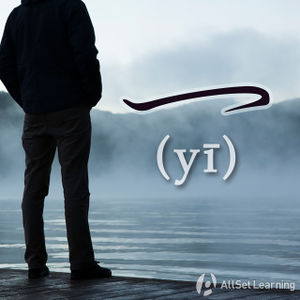Difference between revisions of "Events in quick succession with "yi... jiu...""
| Line 19: | Line 19: | ||
<div class="liju"> | <div class="liju"> | ||
| − | * 我 <em>一</em> 看到 他 <em>就</em> 很 | + | * 我 <em>一</em> 看到 他 <em>就</em> 很 紧张 。<span class="trans">As soon as I saw him, I was nervous.</span> |
| − | * 我 <em>一</em> 想到 | + | * 我 <em>一</em> 想到 下个月 去巴黎 <em>就</em> 很 兴奋。<span class="trans">As soon as I though about going to Paris next month, I was excited.</span> |
* 他 <em>一</em> 生气 脸 <em>就</em> 红 。<span class="trans">As soon as he gets angry, his face turns red.</span> | * 他 <em>一</em> 生气 脸 <em>就</em> 红 。<span class="trans">As soon as he gets angry, his face turns red.</span> | ||
Revision as of 01:45, 26 August 2013
-
Level
-
Similar to
-
Used for
-
Keywords
This pattern tells us that as soon as (一, yī) one thing happened, then (就, jiù) another thing happened immediately afterward.
Structure
The pattern involves two different events, the first preceded by "一", and then the second event, which follows in quick succession, preceded by 就.
一 + Event 1 + 就 + Event 2
The subjects of the two "Events" can be the same, but they don't have to be. If they're the same, then you don't need to repeat the subject for the second one.
Examples
- 我 一 看到 他 就 很 紧张 。As soon as I saw him, I was nervous.
- 我 一 想到 下个月 去巴黎 就 很 兴奋。As soon as I though about going to Paris next month, I was excited.
- 他 一 生气 脸 就 红 。As soon as he gets angry, his face turns red.
Sources and further reading
Books
- Common Chinese Patterns 330 (汉语常用格式330例) (pp. 184) →buy
- New Practical Chinese Reader 2 (新实用汉语课本2) (pp. 240) →buy
- New Practical Chinese Reader 3 (新实用汉语课本3) (pp.169) →buy
- Integrated Chinese: Level 1, Part 1 (3rd ed) (pp. 206-7) →buy
- Integrated Chinese: Level 1, Part 2 (3rd ed) (pp. 88-9) →buy
- Integrated Chinese: Level 2, Part 1 (pp. 85-7) →buy
- 40 Lessons for Basic Chinese Course (基础汉语40课上册) (pp. 173, 189)→buy



